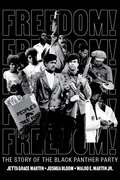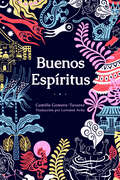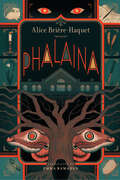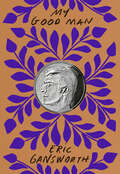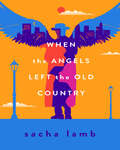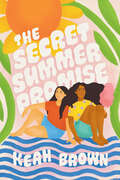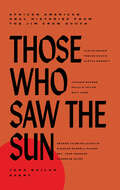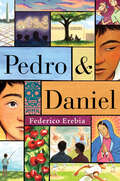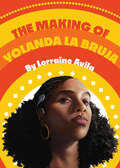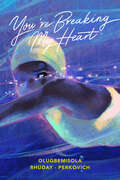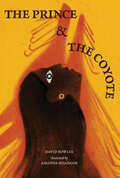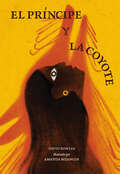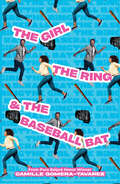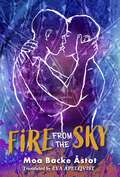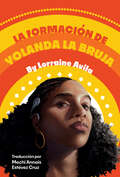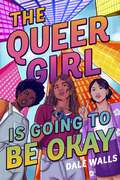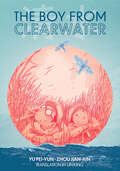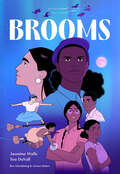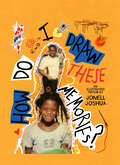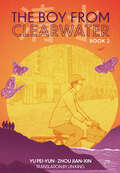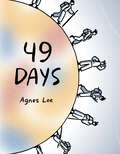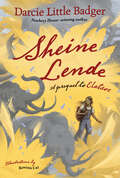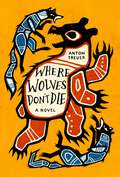- Table View
- List View
Freedom! The Story of the Black Panther Party
by Joshua Bloom Jetta Grace Martin Waldo E. Martin Jr.Booklist Editors’ Choice WINNER of the Russell Freedman Award for Non-Fiction for a Better World Knowledge is power. The secret is this. Knowledge, applied at the right time and place, is more than power. It’s magic. That’s what the Black Panther Party did. They called up this magic and launched a revolution. In the beginning, it was a story like any other. It could have been yours and it could have been mine. But once it got going, it became more than any one person could have imagined. This is the story of Huey and Bobby. Eldridge and Kathleen. Elaine and Fred and Ericka. This is the story of the committed party members. Their supporters and allies. The Free Breakfast Program and the Ten Point Program. It’s about Black nationalism, Black radicalism, about Black people in America. From the authors of the acclaimed book, Black Against Empire: The History and Politics of the Black Panther Party, and introducing new talent Jetta Grace Martin, comes the story of the Panthers for younger readers—meticulously researched, thrillingly told, and filled with incredible photographs throughout. P R A I S E ★ "A passionate, honest, and intimate look into an important time in civil rights history." —Booklist (starred) ★ "Impeccable writing and stellar design make this title highly recommended." —School Library Journal (starred) "Detailed, thoroughly researched...A valuable addition to the history of African American resistance." —Kirkus
Buenos espíritus: (High Spirits Spanish Edition)
by Camille Gomera-Tavarez★ "Auténtico e inmersivo... Una obra de amor" —Kirkus (reseña estelar)★"El debut literario conmovedor de Gomera-Tavarez es una obra sensible e intrínsecamente feminista."; —Publishers Weekly (reseña estelar)Buenos Espíritus es una colección de once cuentos, interconectados con la diáspora dominicana, de la autora debut Camille Gomera-Tavarez.Es un libro centrado en una familia extensa, los Belén, a través de múltiples generaciones.Está ambientado en la pequeña ciudad ficticia de Hidalpa, y también en Santo Domingo, Paterson, San Juan y Washington Heights.Está narrada en un estilo absolutamente real y claramente mágico. Estos cuentos exploran el machismo, la salud mental, la familia y la identidad.Pero sobre todo, Buenos Espíritus representa el primer libro de Camille Gomera-Tavarez, quien toma su lugar como una de las nuevas voces más extraordinarias que han surgido en años.
Phalaina
by Alice Brie`re-HaquetWe discover a new species of life form every day.But, every day,a species also disappears.The fly has 10 chromosomes,the hamster 22, the rat 42, the human 46,the chimpanzee 48, the cow 60,and the butterfly 380.London, 1881.There's something a little eerie about Manon – she's not like the other girls at the orphanage. Maybe it's her red eyes. Maybe it's her silence. Maybe it's the series of violent deaths that seem to follow her.What we do know: someone is hot on her tail. And there's a lot of money at stake in finding out where exactly she comes from – and what exactly she is.Concurrent to Manon's story are letters to Charles Darwin from Professor Humphrey, a scientist who has recently died under mysterious circumstances. Is it true that natural selection left humans at the top of the pyramid of life after all? Or in the process of evolution, was there something elemental that humans lost, something that connected us to the rest of life on earth? Who and what else is out there?In order to stay alive, Manon must untangle the mystery of her origins, and perhaps the origins of humanity as well.From French writer Alice Brière-Haquet and translated by PEN-award winning translator Emma Ramadan comes PHALAINA – the middle grade historical sci fi thriller you won't be able to put down.
My Good Man
by Eric GansworthA literary tour-de-force sure to turn the coming-of-age genre on its head from Printz honor author, Eric GansworthBrian, a 20-something reporter on the Niagara Cascade’s City Desk, is navigating life as the only Indigenous writer in the newsroom, being lumped into reporting on stereotypical stories that homogenize his community, the nearby Tuscarora reservation. But when a mysterious roadside assault lands Tim, the brother of Brian’s mother’s late boyfriend in the hospital, Brian must pick up the threads of a life that he’s abandoned.The narrative takes us through Brian’s childhood and slice of life stories on the reservation, in Gansworth’s signature blend of crystal sharp, heartfelt literary realist prose. But perhaps more importantly, it takes us through Brian’s attempt to balance himself between Haudenosaunee and American life, between the version of his story that would prize the individual over all else and the version of himself that depends on the entire community’s survival.
When the Angels Left the Old Country
by Sacha LambFor fans of “Good Omens”—a queer immigrant fairytale about individual purpose, the fluid nature of identity, and the power of love to change and endure.Uriel the angel and Little Ash (short for Ashmedai) are the only two supernatural creatures in their shtetl (which is so tiny, it doesn't have a name other than Shtetl). The angel and the demon have been studying together for centuries, but pogroms and the search for a new life have drawn all the young people from their village to America. When one of those young emigrants goes missing, Uriel and Little Ash set off to find her.Along the way the angel and demon encounter humans in need of their help, including Rose Cohen, whose best friend (and the love of her life) has abandoned her to marry a man, and Malke Shulman, whose father died mysteriously on his way to America. But there are obstacles ahead of them as difficult as what they’ve left behind. Medical exams (and demons) at Ellis Island. Corrupt officials, cruel mob bosses, murderers, poverty. The streets are far from paved with gold.P R A I S E “Liars, lovers, grifters, a good angel and a wicked one—all held together with the bright red thread of unexpected romance, enduring friendship and America’s history. You don’t have to be Jewish to love Sacha Lamb—you only have to read.”—New York Times Bestseller, Amy Bloom★ “Steeped in Ashkenazi lore, custom, and faith, this beautifully written story deftly tackles questions of identity, good and evil, obligation, and the many forms love can take. Queerness and gender fluidity thread through both the human and supernatural characters, clearly depicted without feeling anachronistic. Gorgeous, fascinating, and fun.”—Kirkus (starred)★ “Richly imagined and plotted, this inspired book has the timeless feeling of Jewish folklore, which is further enhanced by the presence of two magical protagonists, and not one but two dybbuks! In the end, of course, it’s the author who has performed the mitzvah by giving their readers this terrific debut novel.”—Booklist (starred)“I LOVE THIS BOOK SO MUCH!!!! I read it in two days and then I spent the next two weeks thinking about it. Literally forgot to take my lunch break at work because I was busy thinking about it. This book is SO fun and funny and beautiful. Inherently, inextricably deeply queer-and-Jewish in a way that makes my brain buzz. I am obsessed.”—Piera Varela, Porter Square Books “I love this book more than I can say (but I’ll try!) I was delighted by the wry narrative voice of this book from the first paragraph. The author perfectly captures the voice of a Jewish folk tale within an impeccably researched early 20th century setting that includes Yiddish, striking factory workers, and revolutionary coffee houses. It gave me so many feelings about identity, love, and their obligations to the world, themselves, and each other. This story will forever have a place in my heart and in my canon of favorite books. I can’t wait to have it on my shelves!”— Marianne Wald, East City Bookshop“A beautiful story of an angel and demon set on helping an emigrant from their shtetl, and the fierce girl that joins them on the way... A must read for all ages—one filled to the brim with heart.”—Mo Huffman, Changing Hands Bookstore
Pardalita
by Joana EstrelaMILDRED L. BATCHELDER HONOR WINNER School Library Journal Best of the Year BCCB Best of the Year (Blue Ribbon Selection) A beautiful slice-of-life story that is This One Summer meets Ursula K. Le Guin’s Very Far Away from Anywhere Else, told in flashbacks 16-year-old Raquel lives in a small town in Portugal, the kind of place where everyone knows everyone else’s business. Her parents are divorced and she’s just been suspended for cursing out a school aide asking about her father’s new marriage. She has two best friends, Luísa and Fred, but wants something more. Then, from afar, she sees Pardalita, a senior and a gifted artist who’s moving to Lisbon to study in the fall. The two girls get to know each other while working on a play. And Raquel falls in love. Using a gorgeous blend of prose poems, illustrations, and graphic novel format, author and artist Joana Estrela captures the feeling of being a teenager in a way that feels gentle, joyful, and real. P R A I S E ★ "Intimate…Through a fledgling queer romance, the creator presents a story of change, connection, and transformation." —Publishers Weekly (starred) ★ "The elegant simplicity of this book belies the artistic depth and emotional resonance contained within. Will leave readers in quiet, piercing satisfaction." —Booklist (starred) ★ "A leisurely, emotional stroll through a slice-of-life story that explores identity and sexuality in an authentically sweet and subtle way." —School Library Journal (starred) ★ "The writing style is intriguing and deliberate...the slice-of-life approach working perfectly with Estrela’s creative vision in switching up formats to best convey Raquel’s intense and powerful self-discovery…this tender, warm book will likely enchant all romantic fans." —BCCB (starred) "Effectively conveys adolescent turmoil, the heady intoxication of first love, and sweet moments of connection as young queer love blossoms. The book’s strength lies in its careful presentation of telling details. Quietly resonant and sincerely told." —Kirkus Reviews
The Secret Summer Promise
by Keah BrownTHE BSE (Best Summer Ever) LIST!1. Blueberries2. Art show in ShoeHorn3. Lizzo concert4. Thrift shop pop-up5. Skinny Dipping at the lake house6. Amusement Park Day!7. Drew Barrymarathon8. Paintball dayOh, and ….9. Fall out of love with HaileeAndrea Williams has got this. The Best Summer Ever. Two summers ago, she spent all her time in bed, recovering from the latest surgery for her cerebral palsy. She's waited too long for adventure and thrills to enter her life. Together with her crew of ride-or-die friends, and the best parents anyone could ask for (just don't tell them that), she's going to live it up.There's just one thing that could ruin it: Her best friend, Hailee, finding out Andrea's true feelings. So Andrea WILL fall out of love with Hailee – even if it means dating the cute boy George who keeps showing up everywhere with a smile.Do we want Andrea to succeed? No! Does she? We're not telling!Keah Brown is a journalist, screenwriter, and author who has written for places such as Teen Vogue, Elle, Harper's Bazaar, and the New York Times. She is also the creator of #DisabledAndCute. Now, in her YA debut of nerdy queer love, Keah gives us the perfect summer read and cast of characters to fall in love with.
Those Who Saw the Sun: African American Oral Histories from the Jim Crow South
by Jaha N. AveryNYPL BEST OF THE YEAR BEST OF THE BEST, BLACK CAUCUS OF THE AMERICAN LIBRARY ASSOCIATION A stunning collection of oral histories from Black elders who grew up in the Jim Crow South The past is not past. We may think something ancient history, or something that doesn’t affect our present day, but we would be wrong. Those Who Saw the Sun is a collection of oral histories told by Black people who grew up in the South during the time of Jim Crow. Jaha Nailah Avery is a lawyer, scholar, and reporter whose family has roots in North Carolina stretching back over 300 years. These interviews have been a personal passion project for years as she’s traveled across the South meeting with elders and hearing their stories. One of the most important things a culture can do is preserve history, truthfully. In Those Who Saw the Sun we have the special experience of hearing this history as it was experienced by those who were really there. The opportunity to read their stories, their similarities and differences, where they agree and disagree, and where they overcame obstacles and found joy – feels truly like a gift. P R A I S E ★ "Profound… Avery’s thoughtful questions and the answers they elicit engage well with the impressive minds, often put-upon bodies, and persisting souls of subjects and readers alike." —BCCB (starred) ★ "Powerful… Avery highlights essential perspectives on significant cultural moments and movements by centering the voices of those who lived them. With the intention of preserving varied Black experiences and the wisdom and knowledge they offer, the creator crafts a vital, nuanced depiction of a fraught period in American history via myriad perspectives." —Publishers Weekly (starred) ★ "These elders’ voices are a collective treasure." —Kirkus (starred) "Compelling." —School Library Connection "Chilling… bring[s] alive the realities of life under Jim Crow." —Booklist
Pedro & Daniel
by Federico ErebiaPedro and Daniel are Mexican-American brothers growing up in 1970s Ohio. Their mom doesn’t like that Pedro is a spitting image of their darker-skinned father, that Daniel plays with dolls, that neither of the boys love sports like the other kids in their neighborhood. Life at home can be rough – but the boys have an unshakable bond that will last their entire lives. Pedro & Daniel is a sweeping and deeply personal novel – illustrated with beautiful linework throughout by Julie Kwon – that spans from childhood to teenage years to adulthood, all the while tracing the lives of two brothers who are there for each other when no one else is. Together the brothers manage an abusive home life, school, coming out, first loves, first jobs, and the AIDS epidemic, in a coming-of-age story unlike any other. P R A I S E ★ "Pedro and Daniel’s journey, whether together or apart, is an unforgettable one of resilience and, most of all, love. Stunning." —Kirkus Reviews (starred) "A multi-layered and nuanced story." —School Library Connection
The Making of Yolanda la Bruha
by Lorraine AvilaCOMMON SENSE MEDIA SELECTION FOR TEENS BOOKLIST BEST OF THE YEAR NYPL TOP 10 OF THE YEAR HIPLATINA BEST OF THE YEAR Elizabeth Acevedo has said that reading Lorraine Avila feels like an “UPPERCUT to the senses.” You've never encountered an author with prose of this sensitivity and fire. Yolanda Alvarez is having a good year. She’s starting to feel at home at Julia De Burgos High, her school in the Bronx. She has her best friend Victory, and maybe something with José, a senior boy she’s getting to know. She’s confident her initiation into her family’s bruja tradition will happen soon. But then a white boy, the son of a politician, appears at Julia De Burgos High, and his vibes are off. And Yolanda’s initiation begins with a series of troubling visions of the violence this boy threatens. How can Yolanda protect her community, in a world that doesn’t listen? Only with the wisdom and love of her family, friends, and community – and the Bruja Diosas, her ancestors and guides. The Making of Yolanda la Bruja is the book this country, struggling with the plague of gun violence, so desperately needs, but which few could write. Here Lorraine Avila brings a story born from the intersection of race, justice, education, and spirituality that will capture readers everywhere. P R A I S E ★ “Inspiring… full of heart and spirituality.” —Shelf-Awareness (starred) ★ "A sharply rendered portrait...Avila's striking debut is not to be missed." —Booklist (starred) ★ “Unabashedly political…A remarkable, beautifully rendered debut.” —Kirkus (starred) ★ “Suspenseful…A boldly characterized protagonist whose intersectional identities as a queer and Deaf person of color informs her sharp-witted narrative voice and conviction around combatting racism within her community.” —Publishers Weekly (starred) ★ Heartbreaking… thoughtful and gripping… Avila has created a complex heroine whose identities as a Deaf and queer person of color give a layer of authenticity and intersectionality that will resonate with readers.” —School Library Journal (starred) “Impressive and urgent. [Avila] takes on racism, violence and injustice with a mix of magic, spirituality and care that few have attempted—and she’s captivatingly successful.” —Ms. Magazine “Explores gun violence, race, justice, education, and spirituality, which holds this book like a canopy, enclosing and exposing layers of Blackness and the growth and sense of belonging community can provide.” —Al Dia “A necessary story about gun violence, race, and education.” —Refinery29 “Gripping…skillfully depicts the reality of growing up as a Black Latinx teen in the midst of racial violence and social upheaval… Avila carefully demonstrates the tremendous strength in Yolanda’s community and the deep roots of her spiritual life, which keep her grounded as she steps into her full power.” —Horn Book "Written in stunning prose, this sharp examination of education, race, violence, and spirituality is a must-read." —The Mary Sue
You're Breaking my Heart
by Olugbemisola Rhuday-PerkovichHarriet Adu knows that her brother's death is her fault. I mean, it's not actually her fault, but it still kinda is, isn't it? She would do anything to live in a world where she could take back what she said that morning. Then a strange girl shows up at Harriet's high school – a girl who loves the same weird books Harriet does, who doesn't vibe with anyone at school the same way Harriet does – and that different world suddenly seems possible. The girl speaks of a place underneath the subways of New York, where people like them can go and find a home. A place away from the world of high school, grief, cool people, and depression. A place where one may be able to bend the lines of reality and get a second chance at being a better person. Will Harriet open the door? With You're Breaking My Heart, award-winning author Olugbemisola Rhuday-Perkovich offers a remarkable speculative novel that will hit home for anyone who yearns for that one chance to do things over.
The Prince and the Coyote
by David BowlesPURA BELPRÉ HONOR WINNER BOOKPAGE TOP 10 BEST BOOK OF 2023 KIRKUS BEST OF THE YEAR Mexico. 1418. Meet Prince Acolmiztli. Puma of the Acolhua People. Heir to his father’s throne. Half Acolhuan, half Mexica. Singer. Warrior. Poet. Sixteen years old. And now, betrayed. A palace plot, placed by the deadly Tepaneca Empire, kills his mother and siblings, puts his father’s army into retreat, and sends Prince Acolmiztli into a treacherous exile. Battling hunger, snow-swept mountains, and the machinations of the city-states all around him, Prince Acolmiztli vows revenge. It will take years, but he will return to seek justice. And he'll do it with a new name: Nezahualcoyotl. Fasting Coyote. One of the most legendary figures in history. From the award-winning David Bowles comes a heart-pounding historical epic that is Gladiator meets the Song of Achilles -- The Count of Monte Cristo set in pre-Columbian Mexico. Illustrated throughout gorgeously by Amanda Mijangos, The Prince & the Coyote brings to life one of Mexico’s most treasured heroes – Nezahualcoyotl – in a story that will thrill readers far and wide. P R A I S E ★ "Riveting…A maelstrom of oscillating joy and tragedy." —Kirkus (starred) ★ "Bowles adeptly crafts a complex, multi-format, and genre-bending novel for teens." —School Library Journal (starred) ★ "Weaving history and fiction together, David Bowles fashions a rich story of political intrigue, ferocious battles, beautiful landscapes and the enduring hope of humanity." —BookPage (starred) "The pre-Columbian world comes brilliantly alive… Striking four-color illustrations by Amanda Mijangos enhance the sense that this is a glimpse into a complex world as it once existed." —Bulletin of the Center for Children’s Books "Once again, Bowles expertly builds on Nahuatl heritage through the historical life of the sapient Acolmiztli (Nezahualcoyotl)." —Booklist "Sophisticated… Bowles’s immersive prose makes this a mature novel that never shies away from the ferocious realities of war and death." —Publishers Weekly "A stunning historical epic set in pre-Columbian Mexico based on the life of Nezahualcoyotl. Not only are there beautiful illustrations from Amanda Mijangos, but David Bowles incorporates Nezahualcoyotl's surviving poetry into the novel as well. The Prince and the Coyote is a rich and layered story about one of the Americas’ greatest heroes. I was mesmerized from beginning to end!" —Jen Steele, Boswell Book Company
El princípe y la coyote: (The Prince and the Coyote Spanish Edition)
by David BowlesBookPage Top 10 Book of the Year Mexico. 1418.Meet Prince Acolmiztli. Puma of the Acolhua People. Heir to his father's throne. Half Acolhuan, half Mexica. Singer. Warrior. Poet. Sixteen years old.And now, betrayed. A palace plot, placed by the deadly Tepaneca Empire, kills his mother and siblings, puts his father's army into retreat, and sends Prince Acolmiztli into a treacherous exile. Battling hunger, snow-swept mountains, and the machinations of the city-states all around him, Prince Acolmiztli vows revenge. It will take years, but he will return to seek justice. And he'll do it with a new name:Nezahualcoyotl. Fasting Coyote. One of the most legendary figures in history.From the award-winning comes a heart-pounding historical epic that is Gladiator meets the Song of Achilles -- The Count of Monte Cristo set in pre-Columbian Mexico. Illustrated throughout gorgeously by Amanda Mijangos, The Prince & the Coyote brings to life one of Mexico's most treasured heroes – Nezahualcoyotl – in a story that will thrill readers far and wide.
The Girl, the Ring, & the Baseball Bat
by Camille Gomera-TavarezRosie: Capricorn. Does great in class. Wants nothing more than to get into the prestigious Innovation Technical Institute and kiss this awful school goodbye. Her talisman: a magical jacket from her mother's past that gets people to do whatever she says.Caro: Taurus. Rosie's older sister. Always been closer to their estranged father – and always butted heads more with their strict mother. A trip to Dominican Republic for her father's wedding leads her deep into family history that clears up any illusions about her parents she's ever had. Her talisman: a baseball bat that fixes whatever it breaks. Zeke: Certified Triple Pisces. Up in cold-ass Jersey City living with his aunt after his grandmother dies and his father moves to London to take care of his mother. He crushes on EVERYone – he knows he'll find happiness in love, and maybe a way out of this depression. His talisman: a manifestation stone that will make anyone fall in love with him.  Rosie, Caro, and Zeke – and their talismans – find themselves intertwined in a magical, hilarious, and whip-smart Outsiders for the modern day, written by Camille Gomera-Tavarez, a 2022 Publishers Weekly Flying Start.
Fire From the Sky
by Moa B. ÅstotMICHAEL L. PRINTZ HONOR WINNER KIRKUS BEST OF THE YEAR From 23-year-old Sámi debut novelist and reindeer owner Moa Backe Åstot, Fire From the Sky is a queer coming-of-age story about heritage, family ties and age-old commitments to the past. Ánte’s life has been steeped in Sámi tradition. It is indisputable to him that he, an only child, will keep working with the reindeer. But there is something else too, something tugging at him. His feelings for his best friend Erik have changed, grown into something bigger. Ánte is so aware of Erik and his body in relation to his own; everything he does matters so much. What would people say if they knew? And how does Erik feel? And Erik’s voice just the push of a button away. Ánte couldn’t answer, could he? But how could he ignore it? Fire From the Sky will warm your heart as Ánte experiences the magical, soul-combusting feeling of first love. P R A I S E ★ "Fire from the Sky is a superb account of one boy’s struggle to be himself. Åstot does an exemplary job invoking Sami culture, and an especially good job of capturing Ante’s turbulent emotions, dramatically ratcheting up tension, as it is often agony for Ante to be around the friend he's so in love with. Much of Ante’s experience is universal, and empathic readers will hope urgently for his happiness." —Booklist (starred) ★ "A rare and triumphant look at what it means for queerness to stay put, with all the messiness and pain that entails… A fresh voice and a setting that’s pure fire." —Kirkus Reviews (starred)
La formación de Yolanda la bruja: (The Making of Yolanda La Bruja Spanish Edition)
by Lorraine AvilaElizabeth Acevedo has said that reading Lorraine Avila feels like an "UPPERCUT to the senses." We couldn't agree more. We have never encountered an author with prose of this sensitivity and fire. Yolanda Alvarez is having a good year. She's starting to feel at home Julia De Burgos High, her school in the Bronx. She has her best friend Victory, and maybe something with Jose, a senior boy she's getting to know. She's confident her initiation into her family's bruja tradition will happen soon.But then a white boy, the son of a politician, appears at Julia De Burgos High, and his vibes are off. And Yolanda's initiation begins with a series of troubling visions of the violence this boy threatens. How can Yolanda protect her community, in a world that doesn't listen? Only with the wisdom and love of her family, friends, and community – and the Brujas Diosas, her ancestors and guides. The Making of Yolanda La Bruja is the book this country, struggling with the plague of gun violence, so desperately needs, but which few could write. Here Lorraine Avila brings a story born from the intersection of race, justice, education, and spirituality that will capture readers everywhere.
The Queer Girl is Going to Be Okay
by Dale WallsPublishers Weekly Best of the Year Queer Love. Something Dawn wants, desperately, but does not have. But maybe, if she can capture it, film it, interview the people who have it, queer love will be hers someday. Or, at least, she'll have made a documentary about it. A documentary that, hopefully, will win Dawn a scholarship to film school. Many obstacles stand in the way of completing her film, but her best friends Edie and Georgia are there to help her reach her goal, no matter what it takes. A touching and joyous story of queer friendship and girlhood set in the vibrant city of Houston, THE QUEER GIRL IS GOING TO BE OKAY will make you laugh, make you cry, and make you believe that eventually, everything will be okay.
The Boy from Clearwater: Book 1
by Yu Pei-YunFor fans of Persepolis; An incredible true story in graphic novel form, that lays bare the tortured and triumphant history of Taiwan, an island claimed and fought over by many countries, through the life story of a man who lived through its most turbulent times.Tsai Kun-lin, an ordinary boy was born in Qingshui, Taichung in 1930s Taiwan. In part 1 Tsai, in concert with the beautiful illustrations of Chou Jian-xin, depicts a carefree childhood despite the Japanese occupation: growing up happily with the company of nursery rhymes and picture books on Qingshui Street. As war emerges Tsai's memories shift to military parades, air raids, and watching others face conscription into the army. It seems no one can escape. After the war, the book-loving teenager tries hard to learn Mandarin and believes he is finally stepping towards a comfortable future, but little does he know, a dark cloud awaits him ahead.Part 2 opens with Illustrations reminiscent of woodcuts showing the soul-crushing experience of Tsai's detention and imprisonment. In his second year at Taichung First Senior High School, Tsai attends a book club hosted by his teacher and is consequently arrested on a false charge of taking part in an "illegal" assembly. After being tortured, he is sentenced to ten years in prison, deprived of civil rights for seven years, and sent to Green Island for "reformation". Lasting until his release in September 1960, Tsai, a victim of the White Terror era spent ten years of his youth in prison on an unjust charge. But he is ready to embrace freedom.
The Boy from Clearwater: Book 1
by Yu Pei-YunFreeman Book Award Winner GLLI Translated YA Book Prize Honoree An incredible true story in graphic novel form that lays bare the tortured and triumphant history of Taiwan, an island claimed and fought over by many countries, through the life story of a man who lived through its most turbulent times. Part One: Taiwan, 1930s. Tsai Kun-lin, an ordinary boy born in Chingshui, recounts a carefree childhood despite the Japanese occupation: growing up happily with the company of nursery rhymes and picture books on Chingshui Street. As war emerges Tsai's memories shift to military parades, air raids, and watching others face conscription into the army. It seems no one can escape. After the war, the book-loving teenager tries hard to learn Mandarin and believes he is finally stepping towards a comfortable future; but little does he know, a dark cloud awaits him ahead. Part Two: Taiwan, 1950s. In his second year at Taichung First Senior High School, Tsai is arrested simply for joining a book club and subsequently tortured, deprived of civil rights, and sent to Green Island for "reformation." Lasting until his release in September 1960, Tsai, a victim of the White Terror era, spends ten years of his youth in prison on an unjust charge. But he is ready to embrace freedom. Experience parts one and two of the tour-de-force graphic novel series that took Taiwan by storm – parts three and four coming May 2024. P R A I S E ★ "The stupendous achievements here are many: a synergistic literary success; a historic record of twentieth-century Taiwan; the remarkable account of a boy’s life; and a triumph of translation." —Booklist (starred) "A story of persistence, both hopeful and chilling, and a powerful vision of the personal implications of Taiwan’s mid-century history." —School Library Journal "Stunning." —Kirkus
Brooms
by Jasmine WallsYALSA TOP 10 GREAT GRAPHIC NOVELS FOR TEENS BEST OF THE YEAR: Booklist · Kirkus · Polygon · Chicago Public Library · New York Public Library 3 STARS: ★ PW ★ Booklist ★ BCCB Mississippi, 1930s. Magic simmering beneath the surface, kept in check by unjust laws and societal expectations. But for six extraordinary women, the roar of enchanted engines and the thrill of the forbidden broom race offer a chance to rewrite their destinies. Meet Billie Mae, captain of the Night Storms racing team, and Loretta, her best friend and second-in-command. They’re determined to make enough money to move out west to a state that allows Black folks to legally use magic and take part in national races. Cheng-Kwan – doing her best to handle the delicate and dangerous double act of being the perfect "son" to her parents, and being true to herself while racing. Mattie and Emma -- Choctaw and Black -- the youngest of the group and trying to dodge government officials who want to send them and their newly-surfaced powers away to boarding school. And Luella, in love with Billie Mae. Her powers were sealed away years ago after she fought back against the government. She’ll do anything to prevent the same fate for her cousins. "Brooms" is a heart-pounding graphic novel soaring with magic, friendship, and rebellion. It's a Fast and the Furious with broomsticks instead of cars, a historical spotlight on struggles silenced by time, and a celebration of the indomitable spirit that dares to defy the odds. Buckle up, witches and dreamers, for this ride is about to take flight. P R A I S E ★ "Draws on the fantastical to amplify and confront issues of both the past and the present. The result is a heartfelt, gripping, and resonant story about power—how the majority wields it, and how marginalized groups reclaim it." —Bulletin of the Center for Children’s Books (starred) ★ "Fascinating… Though readers will enjoy the dramatic racing scenes, this is truly a story about queer folk and people of color who have created a space where they can joyously and freely be themselves." —Booklist (starred) ★ "Pulse-pounding broom races and comforting domestic sequences… An evocative Fast and the Furious–flavored graphic novel." —Publishers Weekly (starred) "This is the queer, magical, broom-racing version of A League of Their Own that I didn’t know I was missing… The representation in this graphic novel is so diverse and among the best I think I’ve ever seen. It’s clear that Walls and Duvall put equal parts passion and research into this beautiful story. If you don’t read it, you’re missing out." —Rachel Brittain, Book Riot "A sweet, entertaining found-family story that weaves magic with historical injustice; recommended for teen graphic novel shelves. —School Library Journal "Six witches get caught up in the excitement and danger of illegal broom racing in an alternate historical Mississippi… highlights the broadly diverse experiences of folks in the South… highlighting the fact that there has always been and will always be room for queer folks in our communities." —Kirkus "[A] mix of exciting racing scenes, a story about overcoming the odds, and mesmerizing depictions of magic, plus some of the not-so-pretty parts of our country’s history, and it’s done in a way that is compassionate and uplifting." —GeekDad "Brooms Is Your Next Favorite Fantastical LGBTQIA+ Sports Story" —The Mary Sue "Brings vivid characters (queer, broom-racing witches) to life in an equally vivid setting." —Gizmodo (io9)
How Do I Draw These Memories?: An Illustrated Memoir
by Jonell JoshuaJonell Joshua spent her childhood shuttling back and forth between Savannah and New Jersey – living in grandparents’ homes during the times her mother, struggling with mental illness, needed support to raise her and her brothers. Together the family found a way to keep going even in the darkest of times. How Do I Draw These Memories? is an illustrated memoir about nostalgia, faith, the preciousness of life, and unconditional love. From Jonell’s devastatingly brilliant pen as a writer and an artist, it plumbs the depths of what family can be – and how joy and hope can be found in the most ordinary and extraordinary moments. P R A I S E "Ingenious… a vulnerable, revealing homage to family." —Booklist "Despite the difficulties confronting Jonell’s family, this memoir is uplifting and amazingly positive, in some ways celebrating the ordinariness of life as well as the power of unconditional love (which I hope) most experience. Readers are likely to recognize something of their own lives in this memoir." —Reading Rockets
The Boy From Clearwater: Book 2
by Pei-Yun YuThe "glorious" sequel to Freeman Award-winning The Boy from Clearwater After his imprisonment in Green Island, Kun-lin struggles to pick up where he left off ten years earlier. He reconnects with his childhood crush Kimiko and finds work as an editor, jumping from publisher to publisher until finally settling at an advertising company. But when manhua publishing becomes victim to censorship, and many of his friends lose their jobs, Kun-lin takes matters into his own hands. He starts a children’s magazine, Prince, for a group of unemployed artists and his old inmates who cannot find work anywhere else. Kun-lin’s life finally seems to be looking up... but how long will this last? Forty years later, Kun-lin serves as a volunteer at the White Terror Memorial Park, promoting human rights education. There, he meets Yu Pei-Yun, a young college professor who provides him with an opportunity to reminisce on his past and how he picked himself up after grappling with bankruptcy and depression. With the end of martial law, Kun-lin and other former New-Lifers felt compelled to mobilize to rehabilitate fellow White Terror victims, forcing him to face his past head-on. While navigating his changing homeland, he must conciliate all parts of himself––the victim and the savior, the patriot and the rebel, a father to the future generation and a son to the old Taiwan––before he can bury the ghosts of his past. P R A I S E ★ "Yu, Zhou, and King bear glorious witness to little-known tragic history by empathetically spotlighting an everyday superhero who survived—and thrives." –Booklist (starred) ★ "An accessible, timely account of Taiwan’s struggles for democracy and human rights as experienced through a personal lens." –Kirkus (starred) "Triumphant and rewarding." –Foreword
49 Days
by Agnes LeeDay 1 Gotta get up. Gotta keep moving. This map – it says I have to cross over here. Wait, what’s that…? And so begins a graphic novel story unlike any other: 49 Days. In Buddhist tradition, a person must travel for forty-nine days after they die, before they can fully cross over. Here in this book, readers travel with one Korean American girl, Kit, on her journey, while also spending time with her family and friends left behind. Agnes Lee has captivated readers across the world for years with her illustrations for the New York Times Metropolitan Diary. Her debut graphic novel is an unforgettable story of death, grief, love, and how we keep moving forward. P R A I S E ★ "49 Days is an unusual, profoundly moving graphic novel whose elegance belies its complexity and whose emotional impact only grows upon rereading." —BookPage (starred) ★ "A gorgeous, resonating, even mystical creation with little text, overflowing with unsaid feelings... Gently, nudgingly, Lee brilliantly intertwines the past, present, and future." —Booklist (starred) ★ "A moving portrayal of mortality and its aftermath." —Kirkus (starred) "Middle and high school readers will relate to the universal experiences of love, loss, and family tradition." —School Library Journal "Expressive, fluid…an exemplar of what it means to trust the audience." —Bulletin of the Center for Children’s Books "A deeply moving exploration of life after death, making peace with regret and life’s inevitabilities, and learning how to move on." —Publishers Weekly
Sheine Lende: A Prequel to Elatsoe (An Elatsoe Book #2)
by Darcie Little BadgerBOOKPAGE MOST ANTICIPATED YA OF 2024 Shane works with her mother and their ghost dogs, tracking down missing persons even when their families can’t afford to pay. Their own family was displaced from their traditional home years ago following a devastating flood – and the loss of Shane’s father and her grandparents. They don’t think they’ll ever get their home back. Then Shane’s mother and a local boy go missing, after a strange interaction with a fairy ring. Shane, her brother, her friends, and her lone, surviving grandparent – who isn’t to be trusted – set off on the road to find them. But they may not be anywhere in this world – or this place in time. Nevertheless, Shane is going to find them. Darcie Little Badger’s Elatsoe launched her career and in the years since has become a beloved favorite. This prequel to Elatsoe, centered on Ellie’s grandmother, deepens and expands Darcie’s one-of-a-kind world and introduces us to another cast of characters that will wend their way around readers’ hearts. P R A I S E ★ "A classic fantasy adventure and a balm for any soul weary of oppression." —Kirkus (starred) ★ "A wonderful addition to the Elatsoe universe with vital representation, worthy of any YA collection. Highly recommended." —School Library Journal (starred) ★ "Allows readers to absorb each inventive twist, unexpected encounter, jolt of creepy menace, and dreamy illustration." —Booklist (starred) ★ "With elements of Lipan Apache oral history, fantasy, and mysteries, the captivating novel Sheine Lende follows found and inherited family members as they persevere." —Foreword (starred) "Epic." —Bulletin of the Center for Children’s Books "Gritty, luminous… beguiling." —Shelf-Awareness "Darcie Little Badger is so good at what she does, and I can’t wait to see what she comes up with next." —Locus Magazine
Where Wolves Don't Die
by Anton TreuerEzra Cloud hates living in Northeast Minneapolis. His father is a professor of their language, Ojibwe, at a local college, so they have to be there. But Ezra hates the dirty, polluted snow around them. He hates being away from the rez at Nigigoonsiminikaaning First Nation. And he hates the local bully in his neighborhood, Matt Schroeder, who terrorizes Ezra and his friend Nora George. Ezra gets into a terrible fight with Matt at school defending Nora, and that same night, Matt’s house burns down. Instantly, Ezra becomes a prime suspect. Knowing he won’t get a fair deal, and knowing his innocence, Ezra’s family sends him away to run traplines with his grandfather in a remote part of Canada, while the investigation is ongoing. But the Schroeders are looking for him… From acclaimed author Anton Treuer comes a novel that’s both taut thriller and a raw, tender coming-of-age story, about one Ojibwe boy learning to love himself through the love of his family around him. P R A I S E "Where Wolves Don't Die will lift you up and not let you down. Anton Treuer knows how to tell a gripping story and the suspense doesn't let up for a single page. Along the way you'll learn about Ojibwe lifeways, languages, sharp jokes, gentle humor, and how to keep romantic love alive from youth to old age. I couldn't put this book down until I'd finished it, and then, I could not forget it." —Louise Erdrich, Pulitzer Prize Winner and owner of Birchbark Books "I am in awe, crying and smiling at the same time. Where Wolves Don’t Die is a love letter to our Ancestors. This beautiful story is full of cultural teachings and characters so familiar that I'm pretty sure we're related." —Angeline Boulley, #1 NYT bestselling author of Firekeeper’s Daughter "It is quite likely that I will never stop reading Where Wolves Don’t Die. First of all, it’s an excellent piece of writing, and second of all, each time that I would read through one section I would want to go back and read that section or another one over again. I enjoyed the writing so much because the author’s thoughts reflected mine in terms of what I knew my life to be and what I had hoped could have been. I think it is one of the best pieces of writing I have ever read." —The Hon. Senator Murray Sinclair, Chair of Canada’s Truth and Reconciliation Commission "A nuanced adventure centering family and growth." —Kirkus "Where Wolves Don’t Die gives voice to all of us who survived residential boarding school, visibility to all of us who love and live our language and culture, and hope to all good humans who quest for healing, connection, and love. Everyone should read this." —Dennis Jones, Nigigoonsiminikaaning First Nation Elder and Retired Instructor of Ojibwe, University of Minnesota and residential school survivor "Where Wolves Don’t Die will immerse you in the northern wilderness more completely than Hatchet, rivet you to a storyline faster than a Harry Potter book, and transport you into Indigenous culture more authentically and compellingly than anything in print. This is the best book I have ever read." —Charles Grolla, author of Binesi-dibaajimowinan: Ojibwe Bird Stories and Makazinataagewin: Ojibwe Style Moccasin Game "I have never read a book that so authentically portrayed the yearning we all feel for our culture, ancestors, families, and communities. Where Wolves Don’t Die had me laughing out loud, staying up late to absorb one chapter after another, and crying buckets of unrestrained joy. It left me proud to be Indian and so happy to be alive." —Chrissy Downwind, Vice President of American Indian Student Success & Campus Diversity Officer, American Indian Resource Center, Bemidji State University
